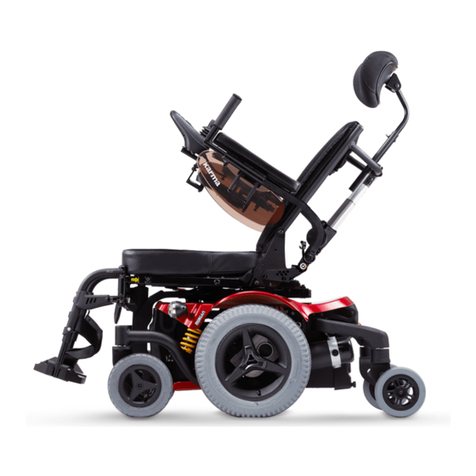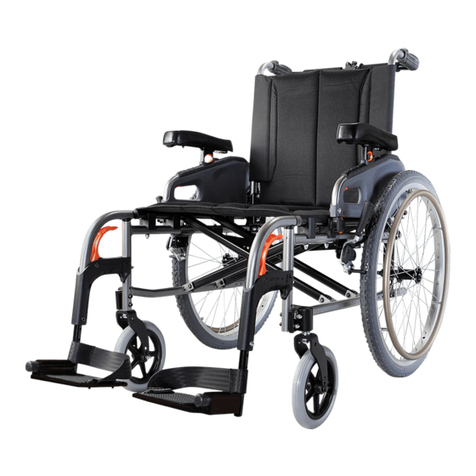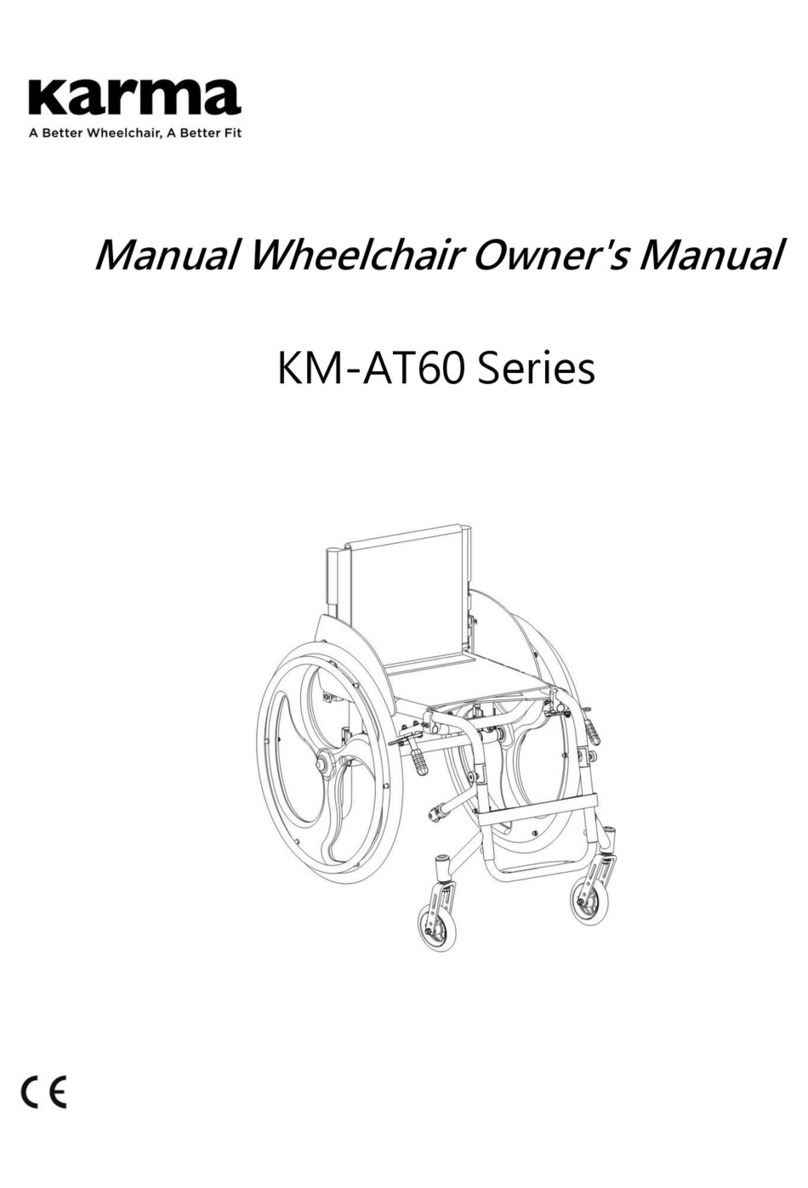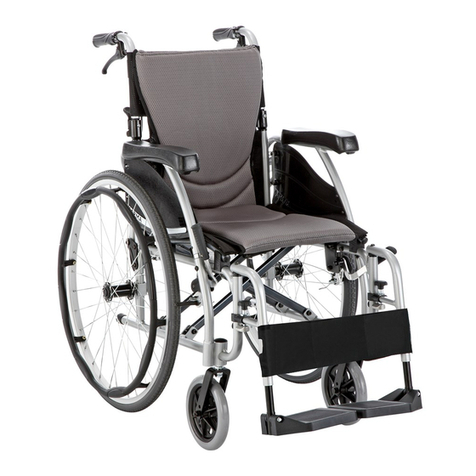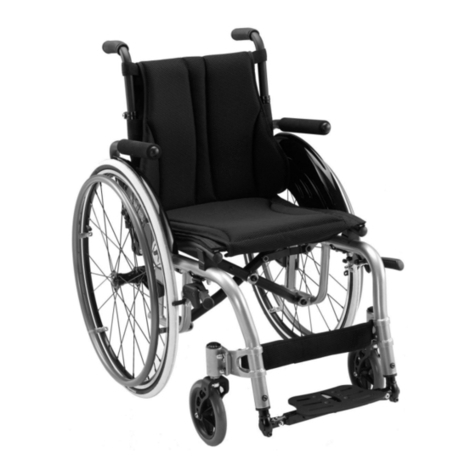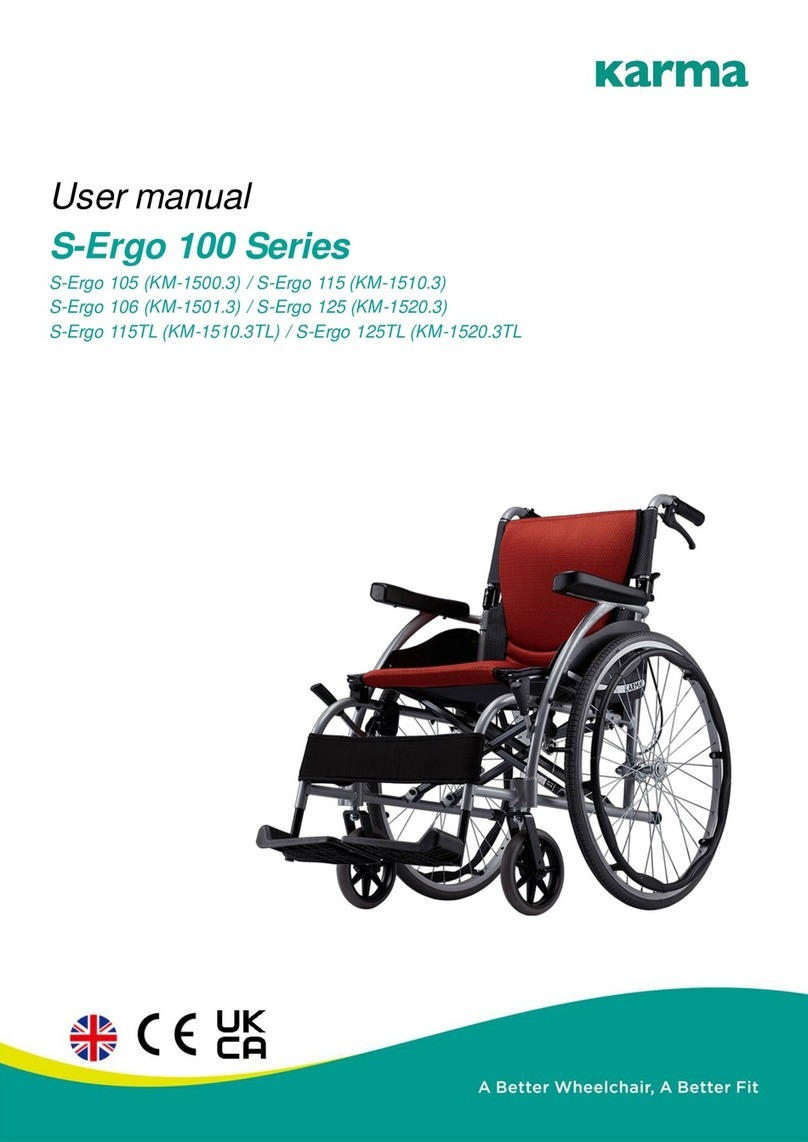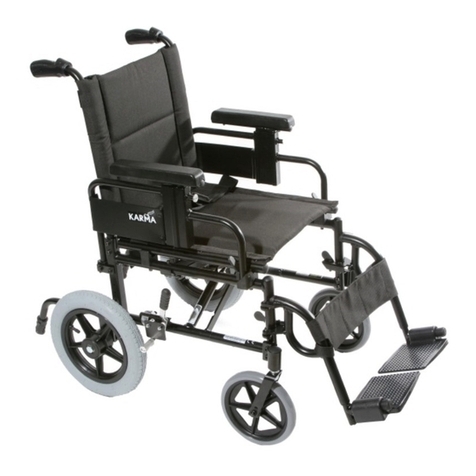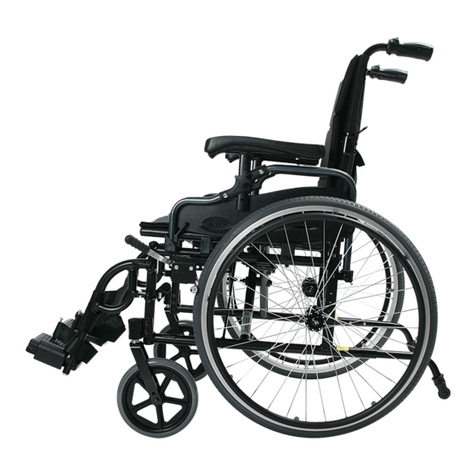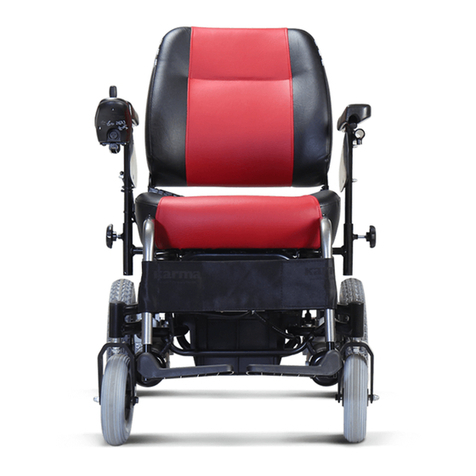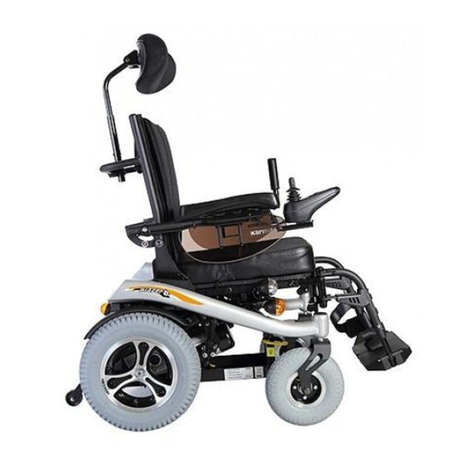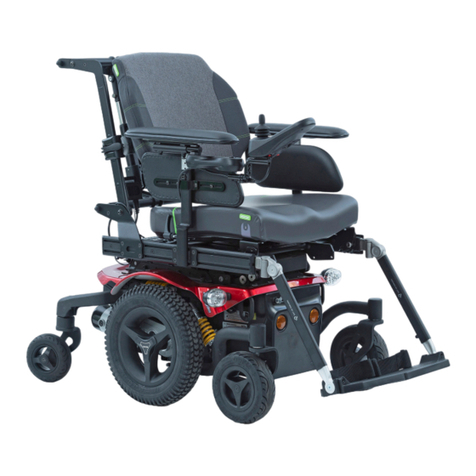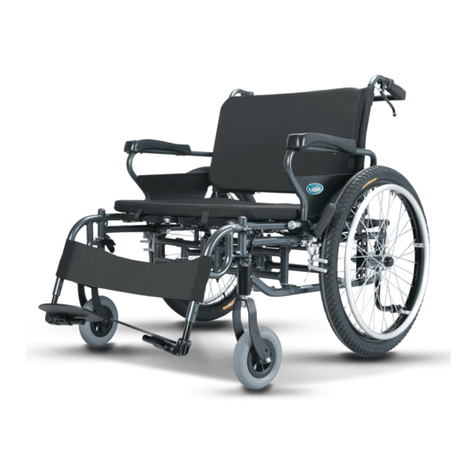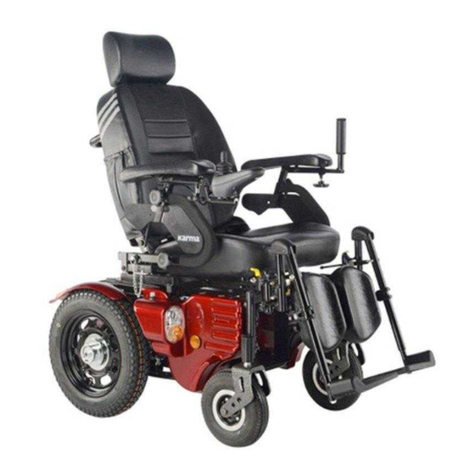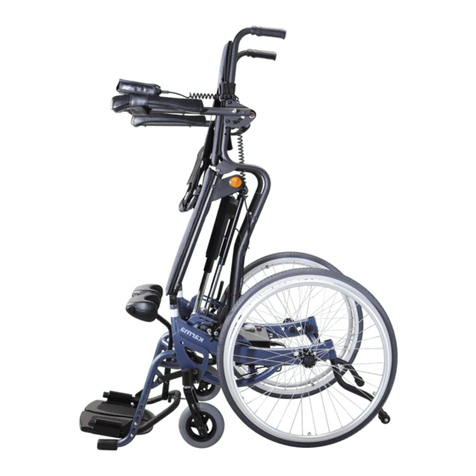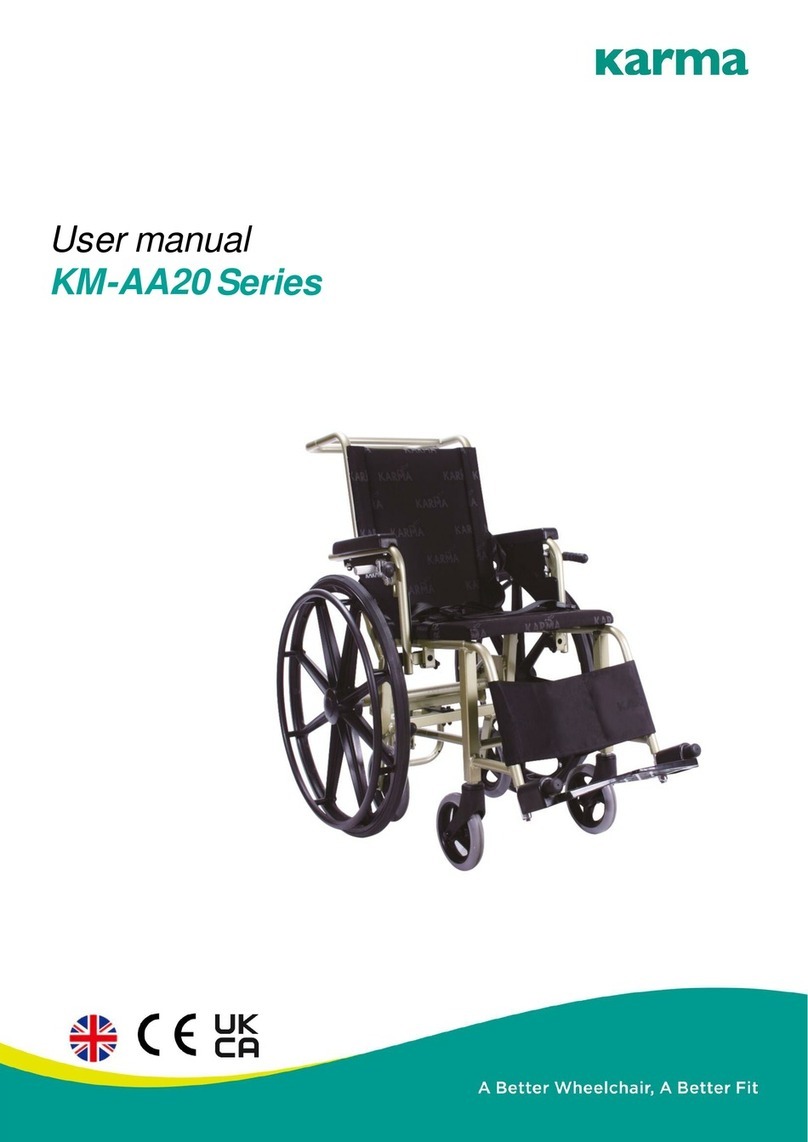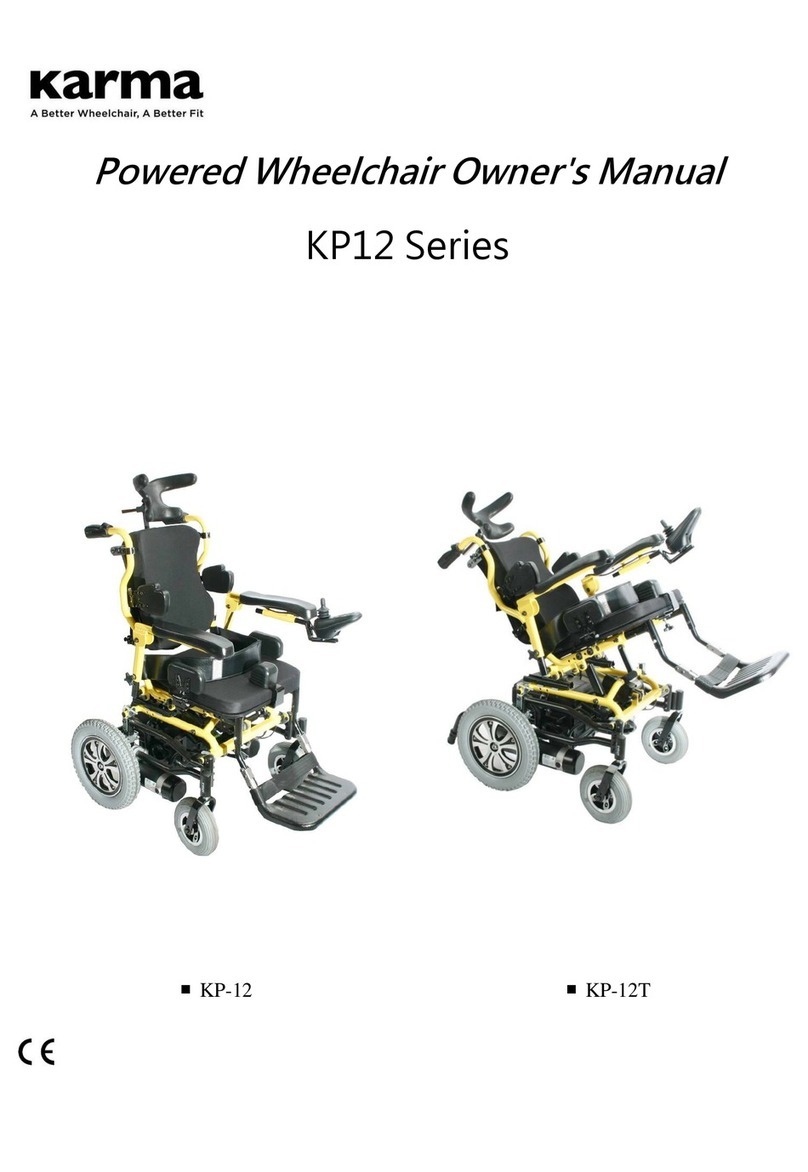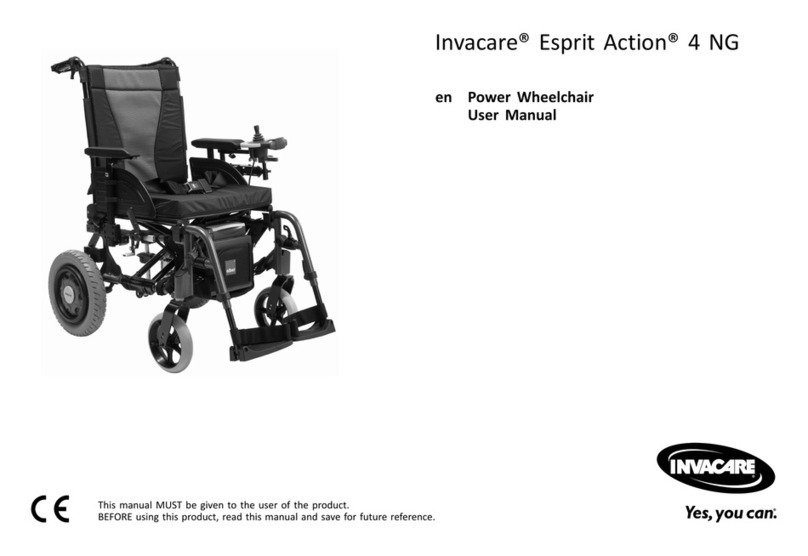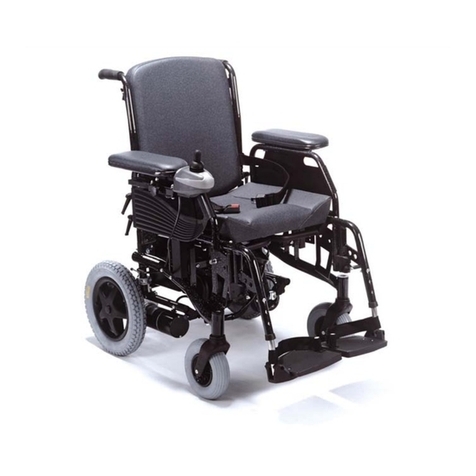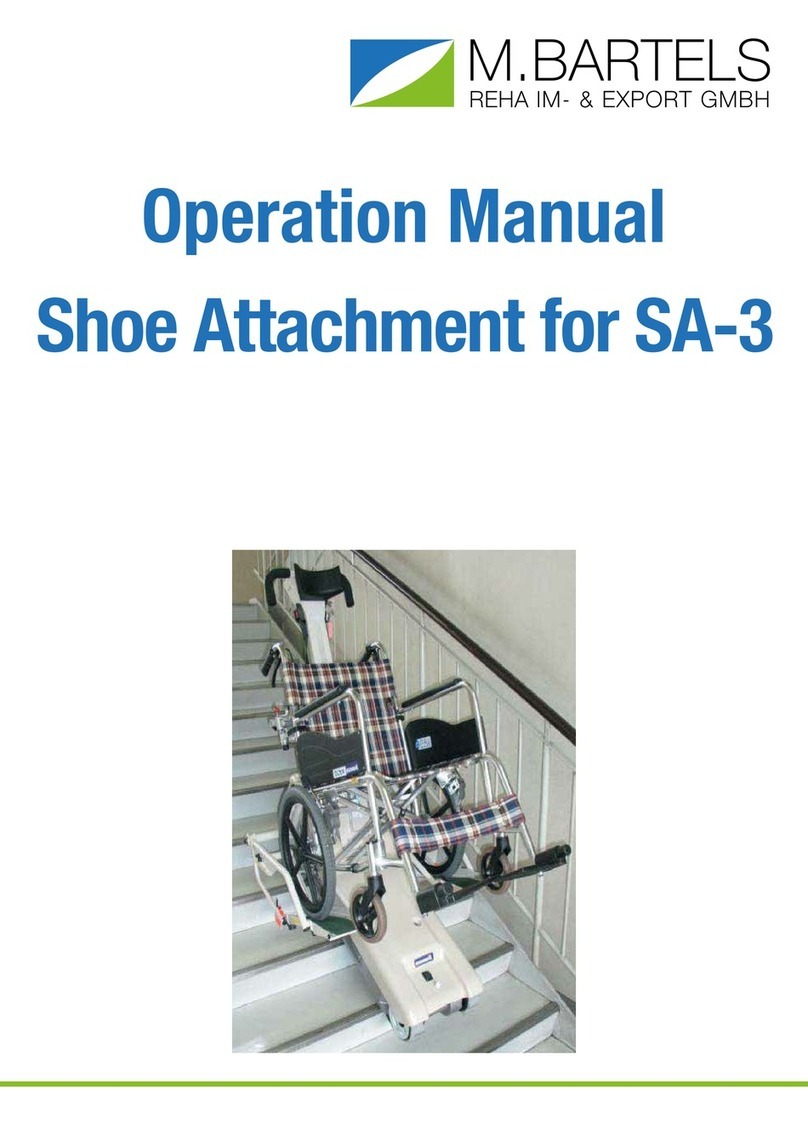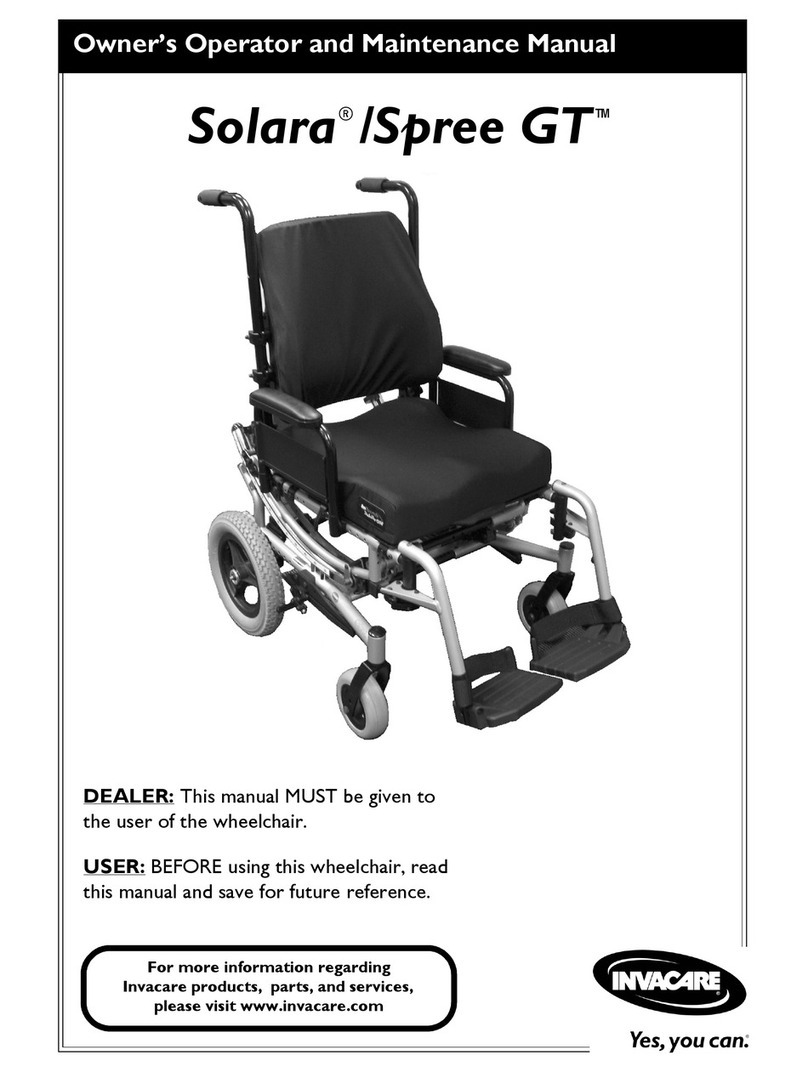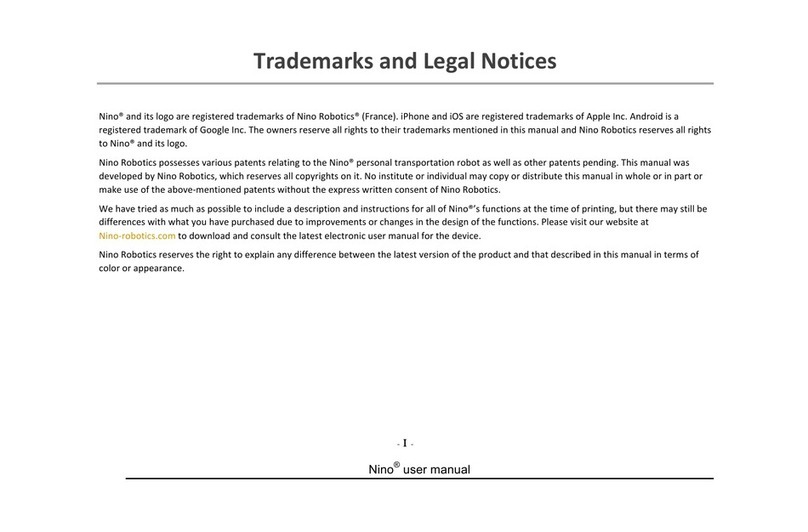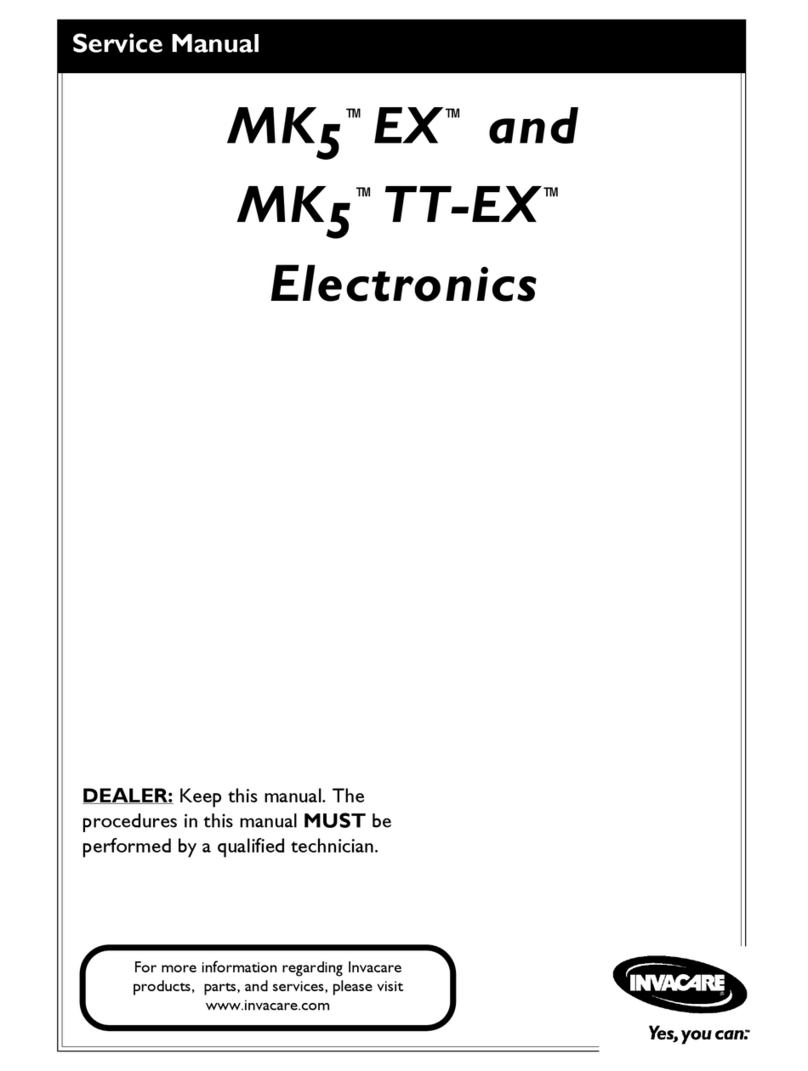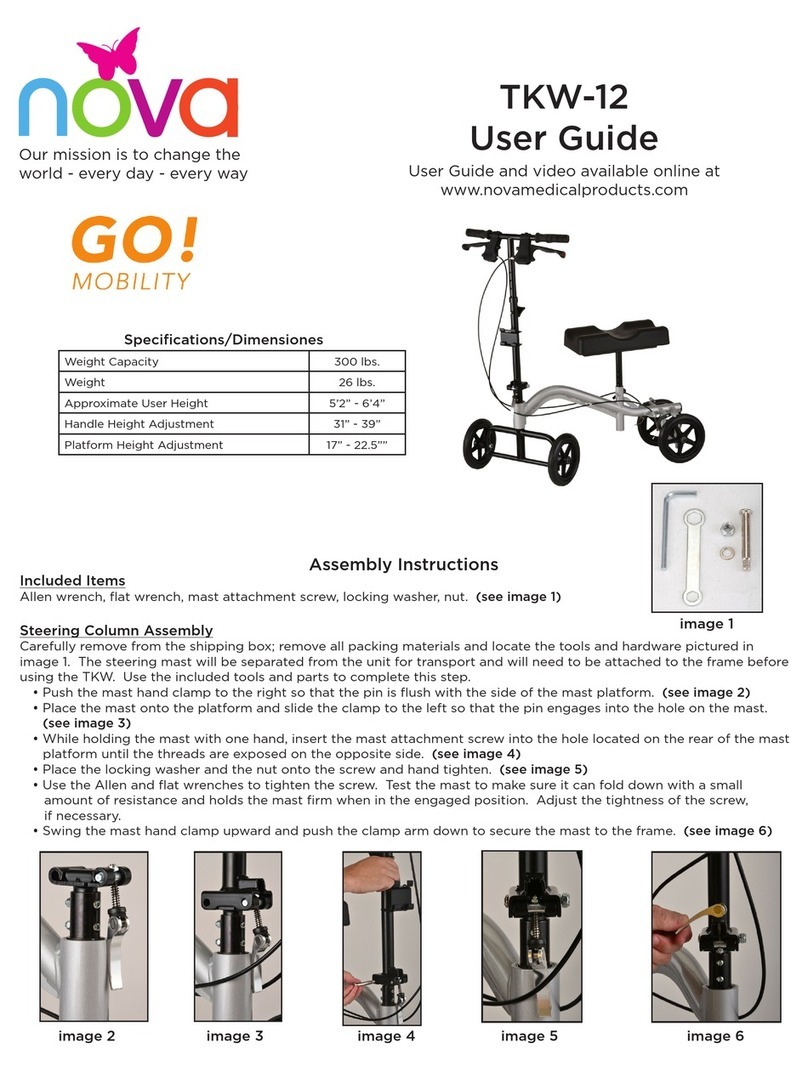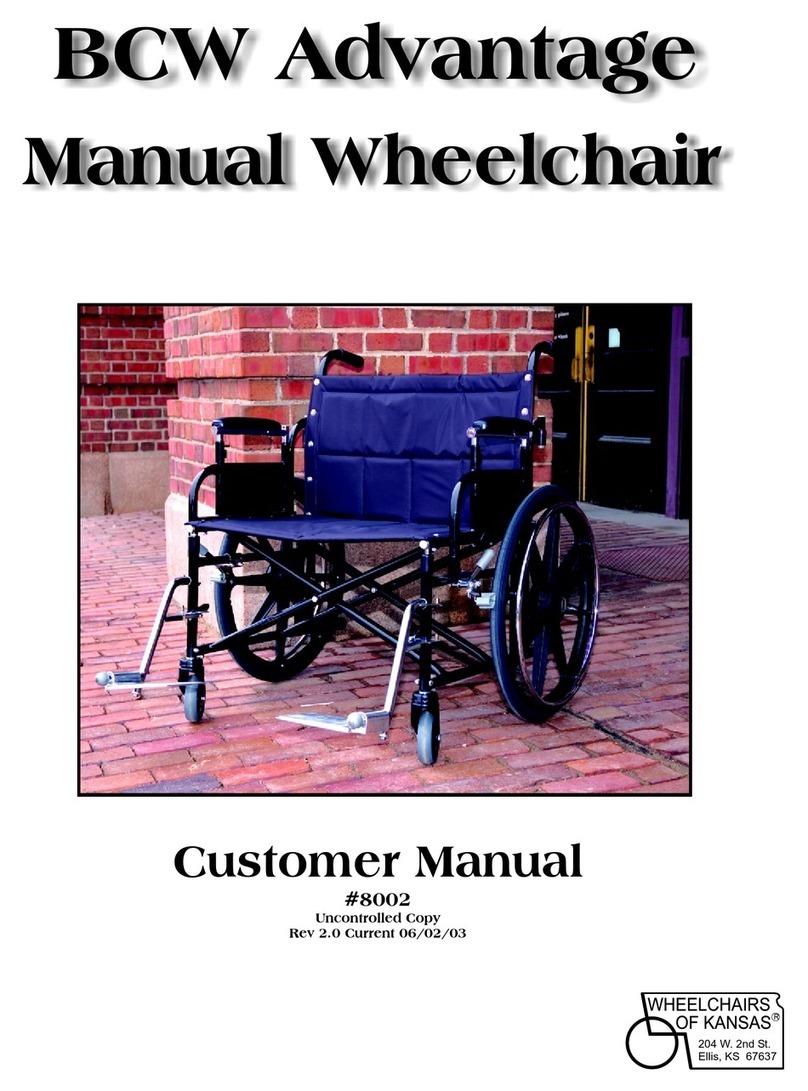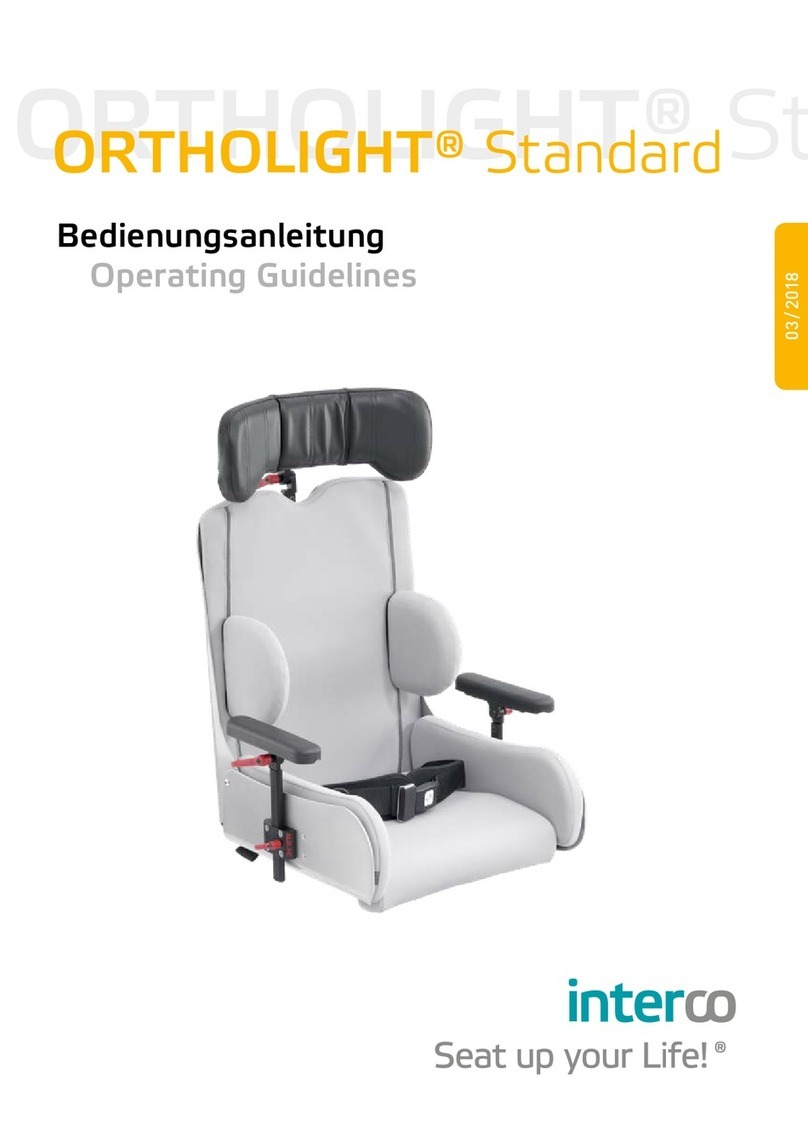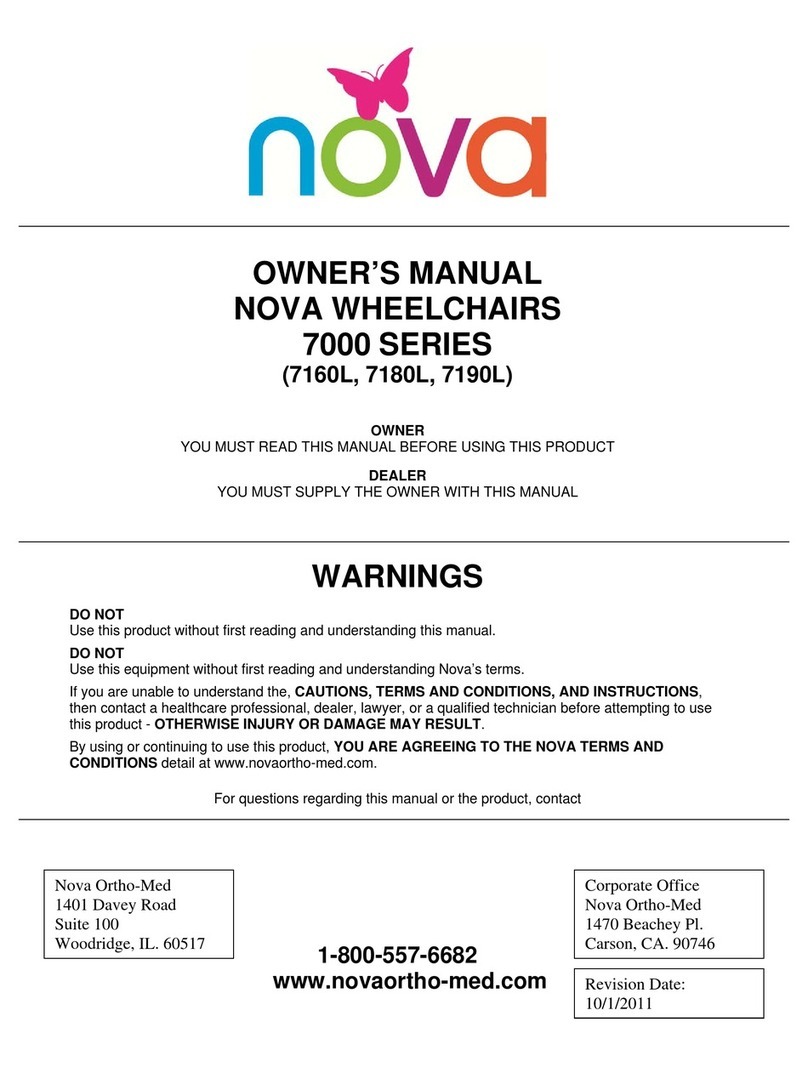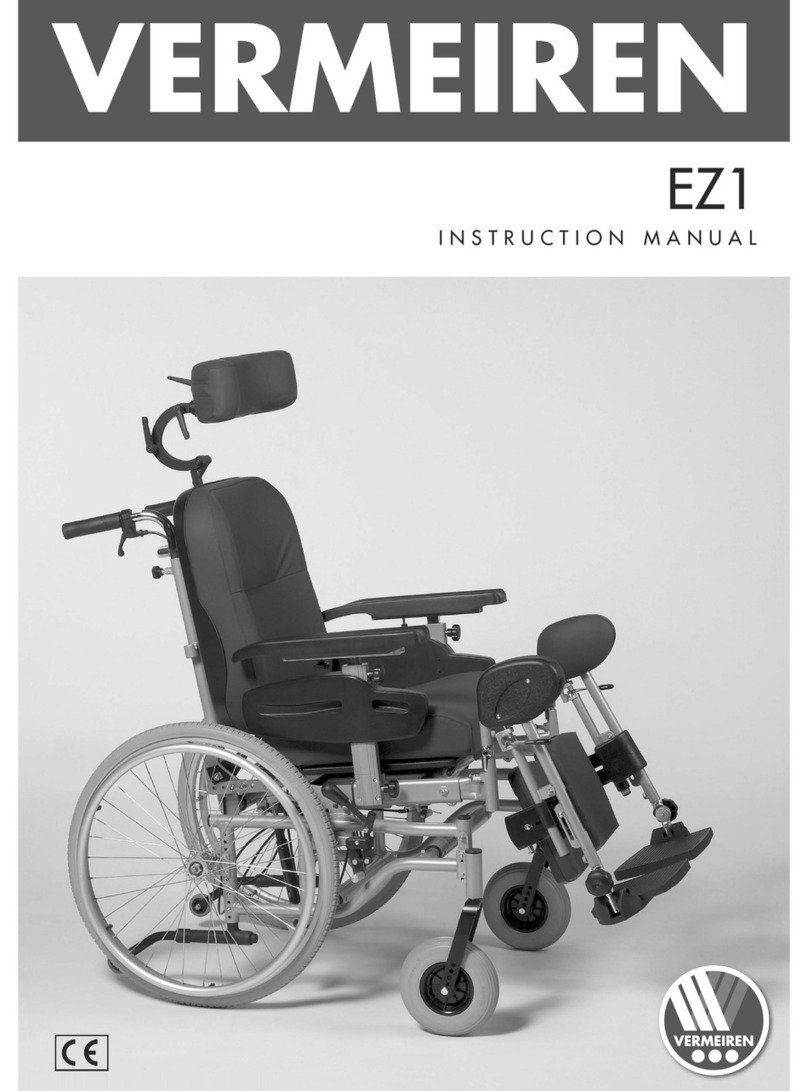
10.6 Anti-tippers (Optional) .....................................................................14
10.7 Seat Upholstery and Backrest Upholstery ...................................... 14
10.8 Removing and Fitting the rear wheels............................................. 15
10.8.1 Removing the rear wheels ......................................................15
10.8.2 Fitting the rear wheels............................................................. 15
10.9 Options and Accessories ................................................................ 16
10.9.1 Height adjustable armrests .....................................................16
10.9.2 Elevating legrests.................................................................... 17
10.9.3 Attendant brake.......................................................................17
10.9.4 Tension adjustable backrest ................................................... 18
10.9.5 Rear wheel axle extension plate.............................................18
10.9.6 Pelvic belt................................................................................ 19
10.9.7 Cane Holder, IV Pole Holder and Oxygen Tank Holder.......... 20
11. First setup................................................................................................ 20
11.1 Seat adjustments............................................................................. 21
11.1.1 Footrest Length ....................................................................... 21
12. Using the wheelchair............................................................................... 22
12.1 General warnings and advices........................................................22
12.2 Use in combination with other products.......................................... 22
12.3 Hot and cold surfaces .....................................................................23
12.4 Danger of pinching..........................................................................23
12.5 Surroundings................................................................................... 24
12.6 Precautions to prevent dangerous situations.................................. 24
12.7 Folding and unfolding the wheelchair.............................................. 24
12.7.1 Unfolding the wheelchair......................................................... 24
12.7.2 Folding the wheelchair ............................................................ 25
12.8 Storage............................................................................................26
12.9 Transfer in and out the wheelchair.................................................. 26
12.9.1 Transfer in the wheelchair....................................................... 27
